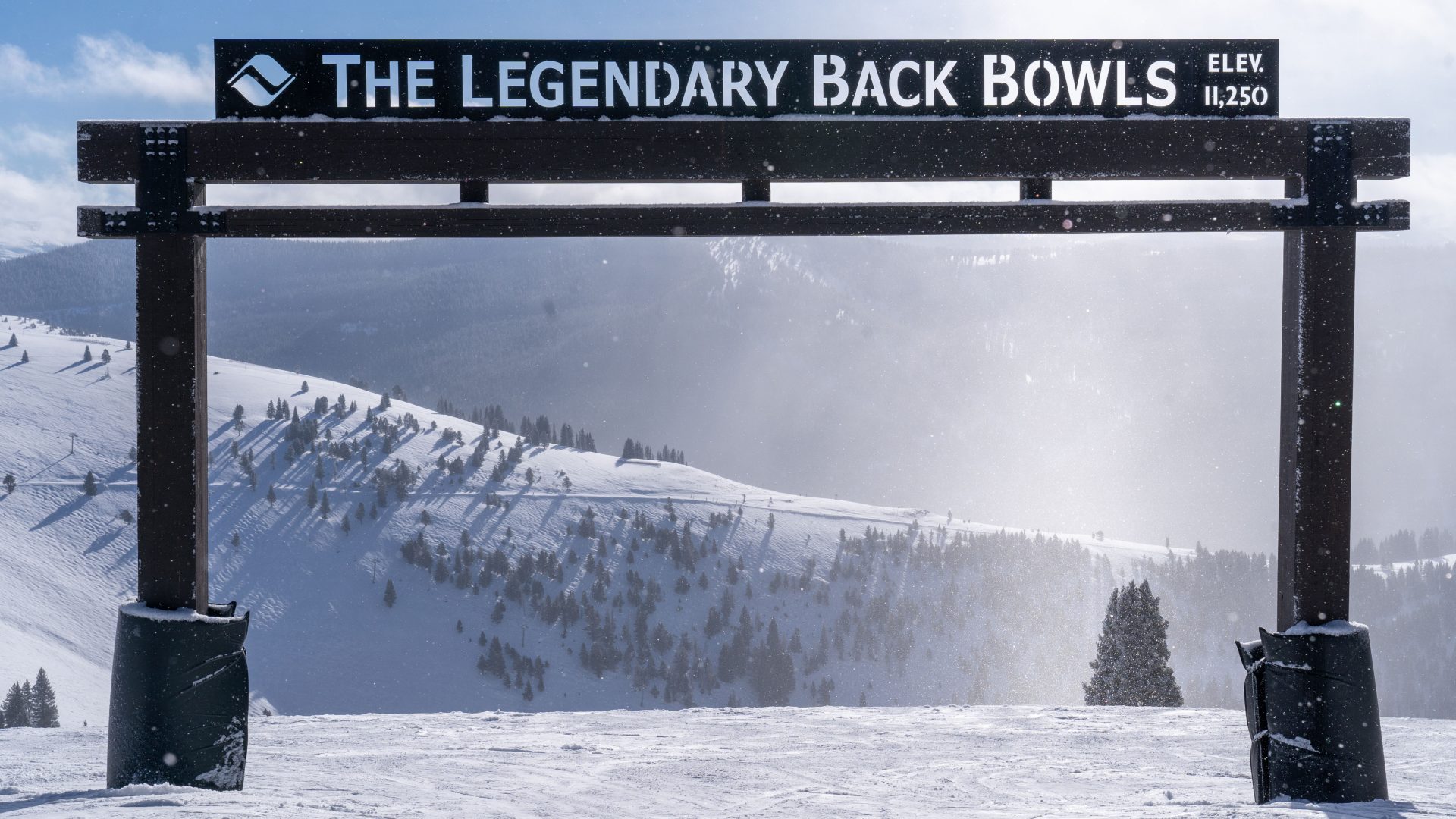
Regardless of their profession or industry, every leader or winner is dissected and analyzed under a microscope by critics. Leaders and winners should be judged and understand that their decisions will be questioned, and they should be expected to be held to a higher standard than their competition. Sometimes, those opinions and criticism can be unjustified and misled by inaccuracies and guided by rumors instead of being based on facts. Vail Resorts is a prime example of a leader in the ski industry that has faced a backlash within the microcosm of the skiing realm. However, is it warranted by truths, numbers, and facts, or just rumors, inaccurate data, and verified certainty? Analyzing and objectively assessing the numbers on Vail Resorts will give a clearer picture.
Vail Resorts, one of the most recognized names in the ski industry, has long been at the forefront of mountain resort innovation. Vail has 42 world-class resorts across North America, Europe, Japan, and Australia and has continuously expanded access to winter sports for millions. However, Vail has dealt with issues lately with a union strike at Park City, a call for its CEO to step down, and paid parking push-back from its guests. While challenges have arisen in recent years, Vail Resorts proactively addresses concerns and invests in a stronger future for skiers and their communities.
Like any industry leader, Vail Resorts has faced scrutiny, particularly regarding crowding, employee relations, and affordability. Rather than ignoring these concerns, the company has taken decisive steps to improve operations, which included employee investment, operational improvements, and community engagement. In 2022, Vail Resorts committed to a $175 million wage increase, raising the minimum wage for employees and improving housing options. Vail Resorts focused on operational improvements to reduce lift lines and improve guest experiences. The company invested $300 million in lift upgrades and automation technology. Vail is also engaged with the local community, not from its home office in Broomfield, Colorado, but at the local mountains owned and operated by Vail. It has expanded partnerships with local businesses and launched initiatives like the $20 million EpicPromise Employee Foundation to support workers in resort communities.
Making Skiing More Accessible
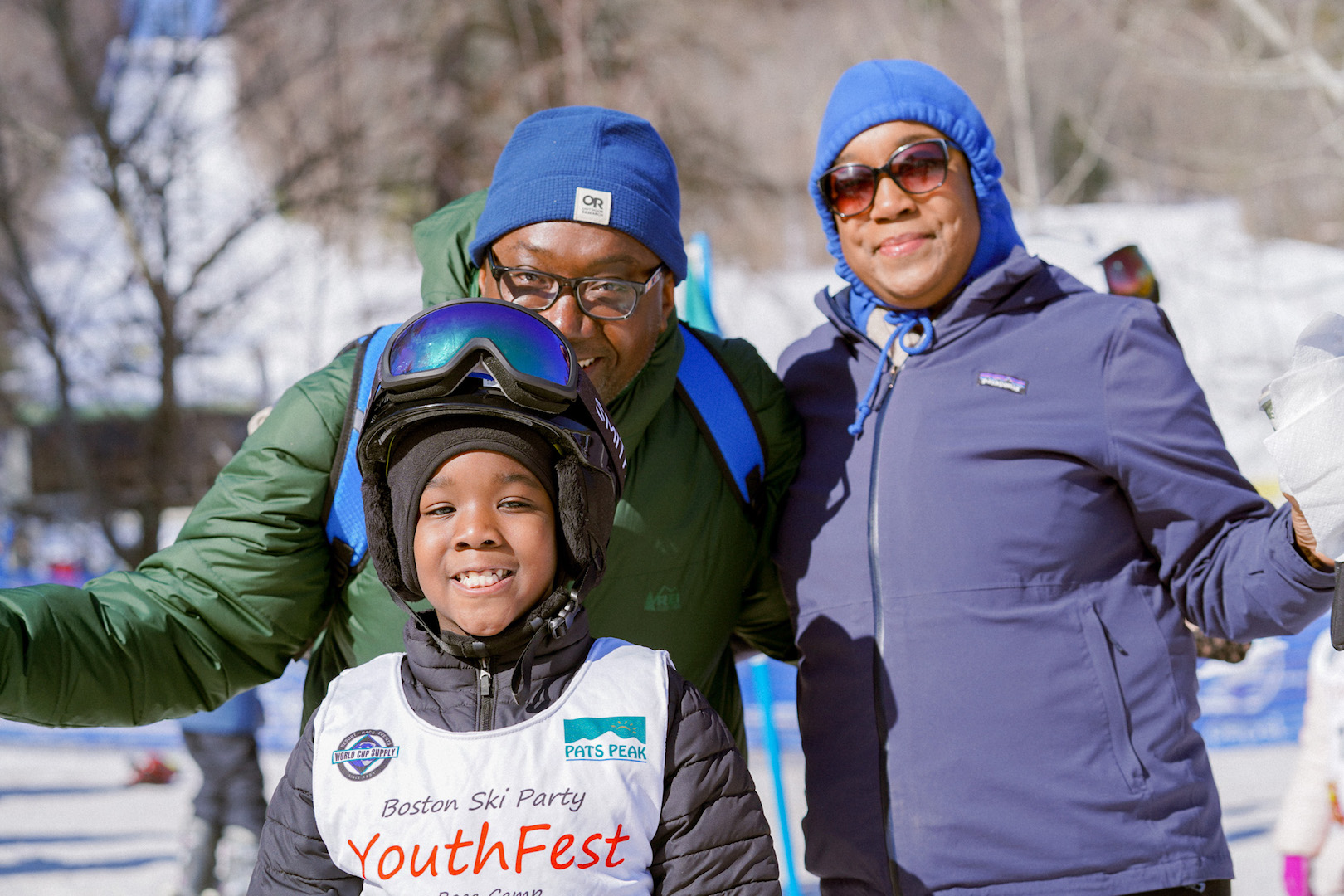
Despite rising costs in the ski industry, Vail Resorts continues to offer one of the most affordable season pass programs through the Epic Pass. With unlimited access to dozens of resorts, it provides skiers with unparalleled value compared to single-day lift ticket pricing at other major ski destinations. Additionally, programs like Epic for Everyone aim to introduce new skiers and riders to the sport, ensuring that winter recreation remains accessible to a broad audience.
Vail’s Inclusive Access is geared to connect people through the sport of skiing. In fact, in any business, and for snowsports’ long-term vitality, it must grow. That includes making skiing more inclusive and welcoming and ensuring it is increasingly accessible to new and diverse participants. Since 2021, Epic for Everyone has helped introduce more than 44,000 youths to snowsports and committed more than $47 million to its adaptive, adult, and youth access programming. Courtney DiFiore, Senior Communications Manager for the Northeast Region of Vail Resorts, said in an interview with SnowBrains.
Vail is committed to ensuring its mountain communities remain welcoming to everyone and has partnerships with organizations like the National Brotherhood of Snowsports (NBS), Unlikely Riders, and Green Mountain Adaptive. Vail is working to increase participation and representation in winter sports for everyone. The National Brotherhood of Snowsports has grown to become Vail Resorts’ second-largest Youth Access partner. At Wilmot, for instance, through its partnership with NBS, it has introduced 150 youth from the Chicago area to snow ports.
Sustainability and Environmental Leadership
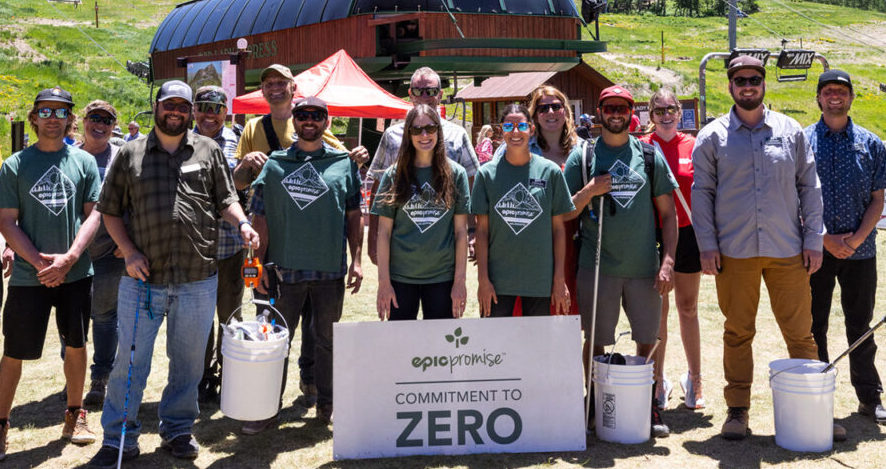
Beyond operations, Vail Resorts is setting industry benchmarks for sustainability. The company’s “Commitment to Zero” initiative aims for zero net emissions, zero waste to landfill, and zero net operating impact on forests by 2030. Already, Vail Resorts has transitioned towards 100% renewable electricity across North American resorts, diverted nearly 50% of waste from landfills through recycling and composting, and partnered with organizations to restore forest health and protect mountain ecosystems.
Vail Resorts understands its responsibility to preserve the long-term vitality of the mountains and the future of skiing and snowboarding. Its FY23 report exceeded its goal to reduce waste to landfill by 5% compared to FY22. Each resort was a valuable contributor to this massive team effort. The resorts that reduced the most waste were Vail Mountain, Grand Teton Lodge Company, Keystone Resort, Crested Butte Mountain Resort, and Stowe Mountain Resort. These resorts achieved a cumulative landfill reduction of 1.1 million pounds. This is work that the guests often don’t see or think about but has an incredibly positive, long-term effect on the vitality of the mountains and the future of skiing and snowboarding. Vail’s Commitment to Zero promised to reach a zero net operating footprint across all of our resorts by 2030, and it is ahead of schedule and on track to reach this goal. Since Fiscal Year 2018, it has invested $10 million into nearly 100 energy-saving projects across our resorts.
A Future-Focused Vision of Inclusiveness
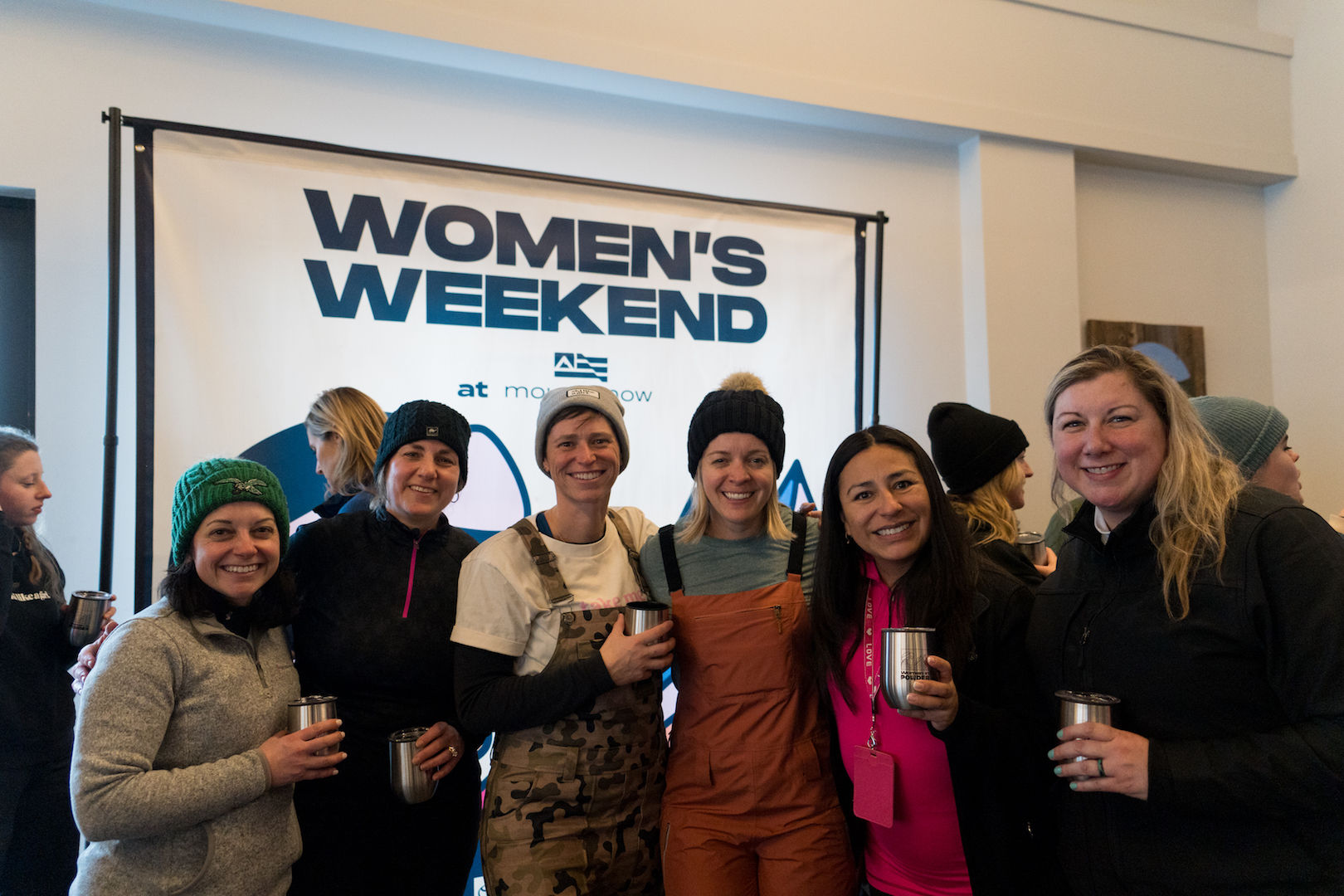
Vail has established and invested in multiple programs for youth, women, and local communities to build a lasting relationship and ensure that everyone can enjoy the mountain for future generations. Vail is dedicated to cultivating a welcoming, supportive, and empowering environment for women in the ski and snowboard community. It aims to increase women’s participation, skill levels, and connection to snowsports, guided by experiences tailored to women’s unique interests and needs. Vail’s goal is to build lasting connections, inspire personal growth, and have fun along the way. “All are welcome at our events, regardless of background or status, because mountains don’t have ceilings,” DiFiore said.
Multi-day events designed to create a supportive, skill-building experience for women. This includes intermediate and advanced skill-building, social connection moments, and wellness-focused activities. Vail has established these activities at its resorts across the United States at Keystone, Northstar, Mount Snow, Crotched, Park City, Kirkwood, Attitash, Hunter, and Stevens Pass.
Women in Powder is Vail’s initiative dedicated to cultivating a welcoming, supportive, and empowering environment for women in the ski and snowboard community. The aim is to increase women’s participation, skill levels, and connection to snowsports, guided by experiences tailored to women’s unique interests and needs. This year, women’s Weekends at select resorts and a First Friday series are new.
While not part of Women In Powder, another piece of programming focused on women in snowsports that’s new this season is Stowe Mountain Resort’s Women and Wine series. It’s a half-day lesson from 1:00 p.m. to 3:00 p.m., on select Wednesdays, with a group après session after. These lessons are designed by women, taught by women, and for women to create a supportive setting to develop skills and community. Stowe has previously offered full-day women’s clinics and camps and received feedback that full-day options can be challenging for women to join. Some women spend their mornings caring for their families’ needs and often can’t commit to a full-day lesson. For others who are just getting into snowsports, a half-day lesson can feel less intimidating and not as physically demanding as a full day. Based on this feedback, Stowe created a more flexible option that brings in a social aspect to help create an inclusive environment for all ability levels and disciplines.
The Women and Wine lessons are customized to the participant’s individual goals, even within the group setting. The instructors take the time to dive into each individual’s short and long-term goals, and the all-female environment can help them feel more comfortable sharing aspirations, fears, and struggles that they might not feel as comfortable sharing in a more male-dominated setting. “We want everyone to feel welcome and that they belong here at Stowe Mountain Resort, and our women’s programs are just one of the many ways we focus on growing inclusion in the industry,” DiFiore said. “This year, we’ve offered a full calendar of events in the East, featuring beloved traditions as well as new additions—including Pride celebrations, women-centered weekends and programming, and more.”
Community Giving
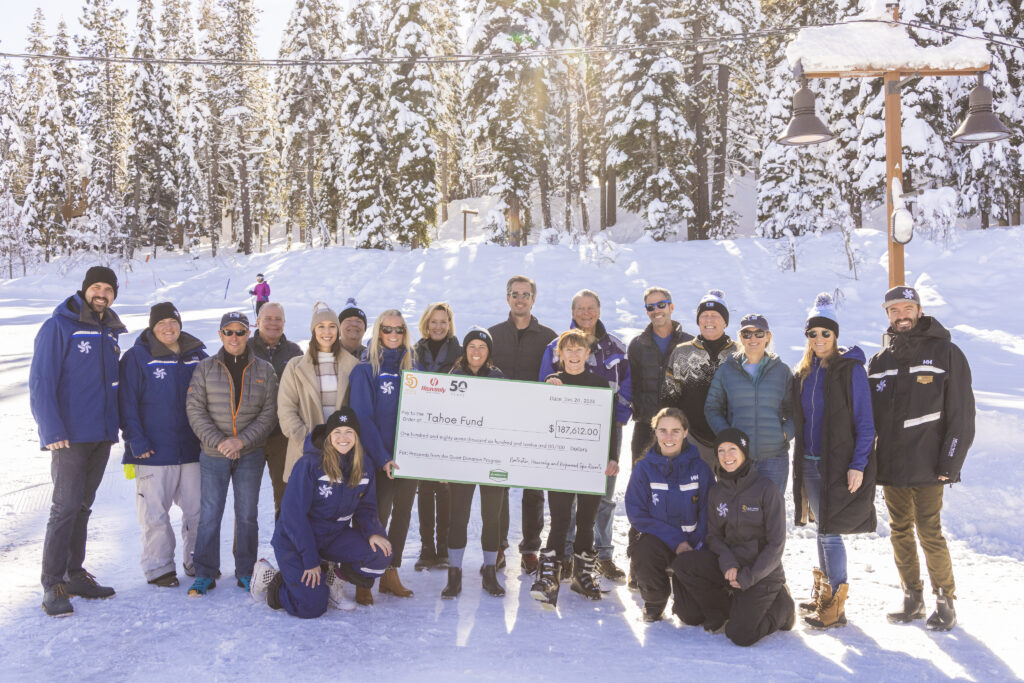
Vail Resorts prioritizes giving back to its communities. In the past five years, it has contributed more than $775,000 to non-profits in Vermont through cash and in-kind grants. These non-profits tackle crucial community issues such as helping to expand access to affordable housing, childcare and early education, food security, and more. Okemo is a great example of how Vail partners with and supports its local community. Every year, Okemo holds its annual Sock Drive, benefiting local organizations like Ludlow, Mt. Holly and Chester elementary schools, Black River Good Neighbors, and more. It also does community clean up at West Hill hiking trails, provides the fairgrounds for the annual Best of Vermont Summer Festival, and participates in local events and programming like the Rutland County Pride Festival and Ludlow Softball League. “A big reason the mountains are successful is because these communities are here. I live in these communities. We care about them, and we live here,” Difiore said.
Investing in the Next Generation
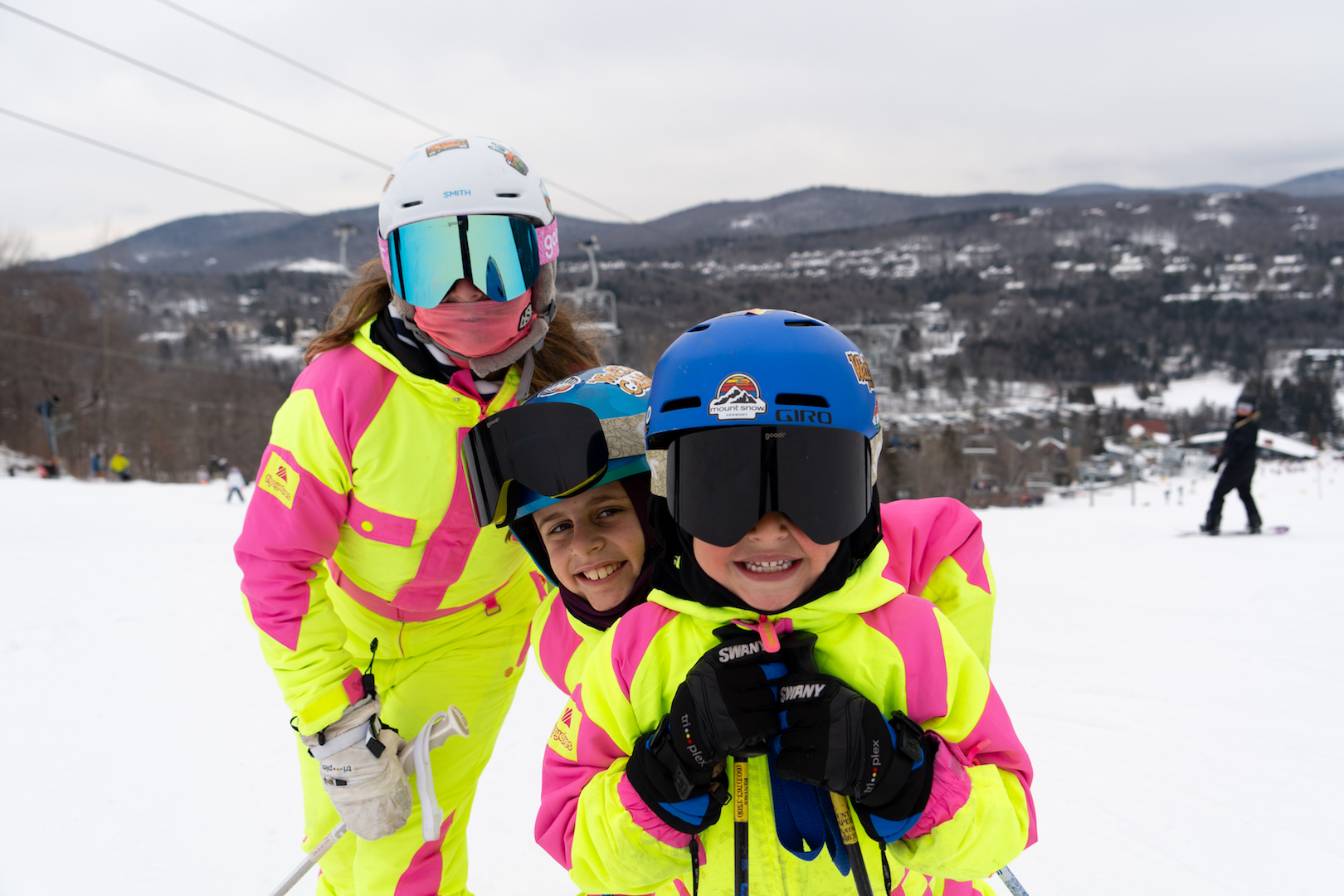
Vail Resort’s employees are also residents and neighbors of their resorts. Therefore, they are deeply committed to fostering their mountain resort communities by partnering with essential organizations to create lasting impact and giving as many youth as possible the opportunity to enjoy the sport. One example is that during the 2022-23 season, it provided more than 850 youth in Vermont with in-kind community giving, providing more than $900,000 in products and services to get them on the slopes, according to DiFiore. The Epic for Everyone Inclusive Access partners with Vermont resorts and beyond, including the CHILL Foundation, Deerfield Valley Community Partnership, Green Mountain Adaptive, Kids on Top, Dover Schools, Twin Valley Elementary and Middle School, Mount Snow Adaptive, National Brotherhood of Snowsports – Nubian Empire Club, University of Vermont, and more.
In the Northeast region, Okemo partners with local schools to offer a Winter Snowsports program that provides two weeks of lessons for new skiers and riders. Last season, it helped over 400 students get on the slopes. Since 2020, Mount Snow has donated to the Deerfield Valley Community Partnership to support Choose Snow, a program for full-time Vermont students in grades 7-12 that inspires healthy lifestyle choices. Vail provides over 200 middle and high school students with season passes each year through this program. This winter, Vail partnered with Unlikely Riders at Stowe, Okemo, and Mount Snow, providing 120 BIPOC adults learn to ski and ride lessons.
“Vail’s mission is to create the experience of a Lifetime for our employees, so they, in turn, can create the experience of a lifetime for our guests–and we believe we are delivering on that,” DiFiore said. Vail Resorts surveys its guests on an ongoing basis about their experiences at our resorts, and throughout the last four years, guest satisfaction scores have continuously gone up at all three of its Vermont resorts. These data provide more value and variety for guests with the Epic Pass to Vail Resorts’ Northeast network. It is critical to the sport’s future growth and allows Epic Passholders more choice, effectively spreading skiers and riders across the region.
One example is how much a season pass to Stowe cost before Vail’s acquisition: more than $2,300 (2016-17). After the acquisition and after moving Stowe to the Epic Pass, which gave pass holders significantly more options and choices, Vail lowered the season pass price by more than 60% to less than $900 (2017-18). It also provided the same value to Okemo and Mount Snow guests. Okemo Pass was $1,375 (2017-18), and Vail dropped it 48% to $709 following its acquisition. Mount Snow Pass was $1,129 (2018-19), and Vail dropped it 35% to $739 following its acquisition. Vail also offers passes specially designed to provide value to its local and regional guests, including the Northeast Value Pass and the Epic Day Pass.
Vail aims to make skiing and riding more accessible by offering pass holders an incredible deal in exchange for advance commitment. By incentivizing advance commitment, Vail ensures it consistently has the capital to reinvest in the guest’s experience. For its guests, advance commitment products offer compelling value, flexible access for the entire season, and ancillary benefits and discounts, such as Epic Mountain Rewards.
Resort Investments
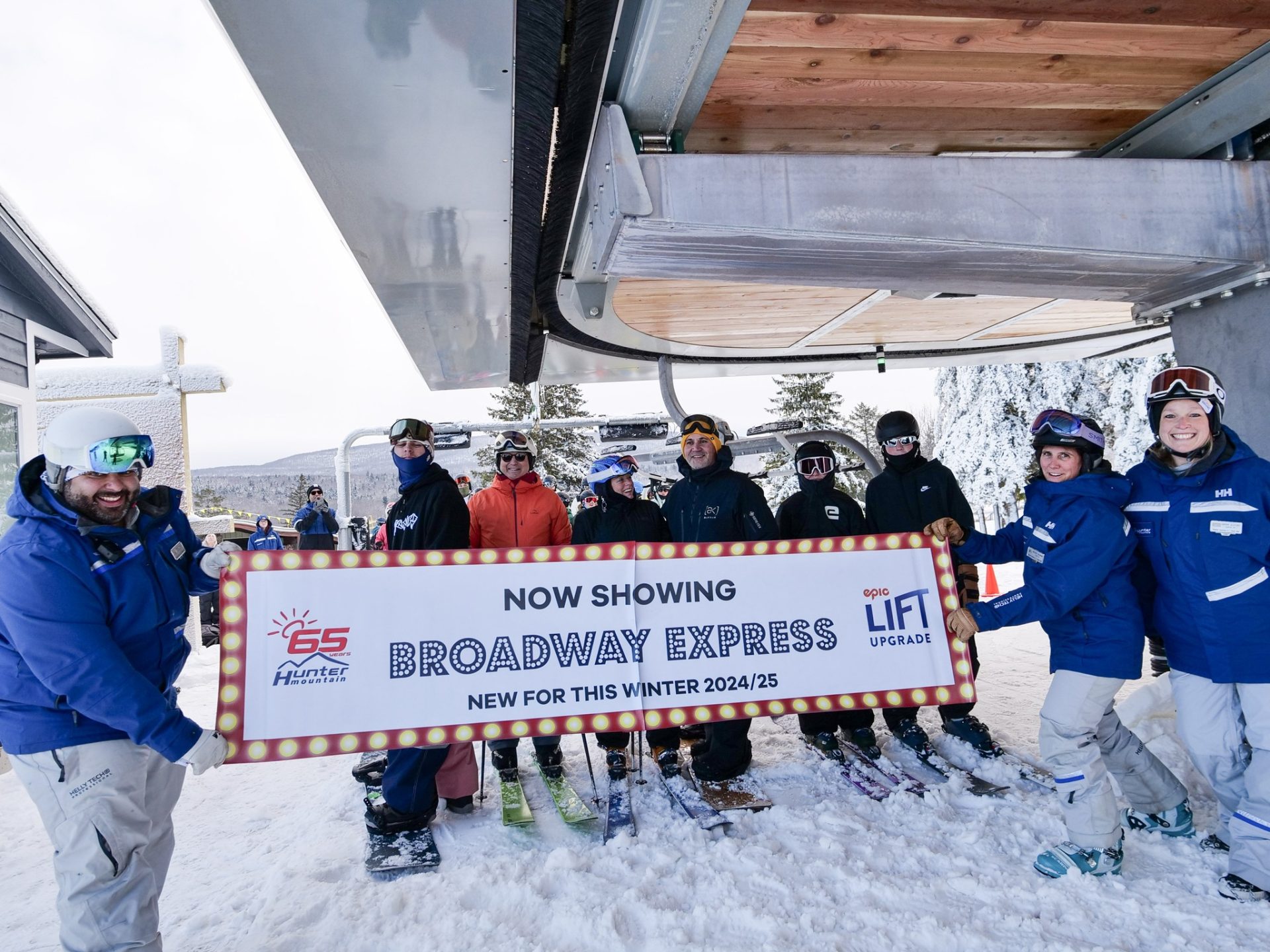
In the past three years, Stowe, Okemo, and Mount Snow have all seen upgraded lifts. Nine resorts in Vail’s East region have received a total of 16 Epic Lift Upgrades, including three Vermont resorts, Hunter, Jack Frost, Big Boulder, Boston Mills, and Brandywine, and two back-to-back upgrades at Attitash over the past two seasons.
Vail also enhances its snowmaking systems each year by adding or upgrading equipment and servicing components to boost efficiency and effectiveness. Investments in technology also play a pivotal role in the overall experience Vail provides its team and guests. Piloted in 2022 and launched in 2023, the My Epic app makes the mountain experience more seamless and intuitive for its guests by using data to better understand and respond to their needs. New this past season, My Epic Gear is an innovative gear-membership program that’s better than renting, easier than owning and specifically designed for skiers and riders. It eliminates the struggle of hauling gear to the mountain and unlocks access to over 60 of the latest ski and snowboard models with slopeside pick-up and drop-off, all from a smartphone through the My Epic app.
“Year after year, we make industry-leading commitments to providing the ultimate experience for our guests and team. We commit substantial capital toward upgrading resort infrastructure, including faster and more efficient lifts, enhanced snowmaking capabilities, and upgraded facilities. These improvements have improved the overall guest experience and improved working conditions for employees,” DiFiore said.
Valuing its Employees
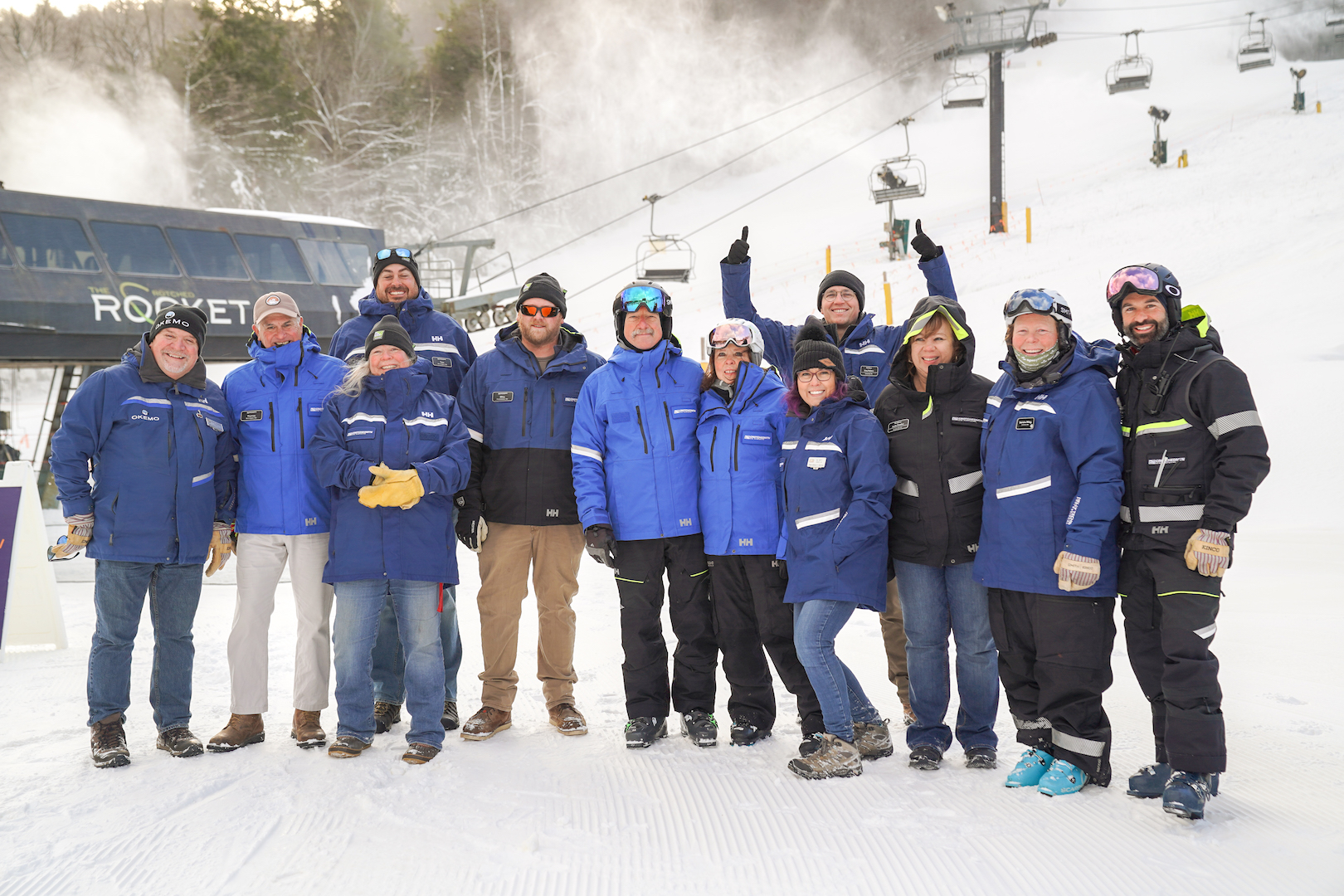
Vail can’t deliver the experience of a lifetime without its frontline employees, and it understands that. Vail is continuously looking at ways to improve its employee experience, including wage increases, expanded benefits, training, and leadership development. Increasing employees’ wage increase to $20 an hour was a big deal in the industry at the time, and for good reason. In March of 2022, Vail made a $175 million annual incremental investment in the employee experience that included an average 30% wage increase for all hourly employees. At the time, this new hour minimum wage was nearly 60% more than Vermont’s minimum wage; today, it’s still 46% above the state’s minimum wage. But the impact goes beyond wages–Vail also supports its team holistically.
Vail Resorts has implemented industry-leading employee benefits at all of its resorts. Those perks start with a free ski pass, but as a Vail Resorts employee, that’s just the beginning. Vail offers a competitive set of benefits expected from an industry leader, along with non-traditional benefits that only a mountain resort company like Vail Resorts can offer. Through the company’s Epic Wellness program, employees have access to affordable healthcare options, 401(k) retirement plans with company match, and mental health resources. Seasonal and full-time workers alike benefit from these offerings. Employees also receive professional development, career growth opportunities and programming, lodging and food discounts, and retail and pro deals.
In 2022, Vail doubled its investment in mental health, which resulted in a 12% utilization rate of clinical resources enterprise-wide. That was an increase from fiscal year 2022, a 10% utilization rate, and far above the national average of 5%. This year, Vail increased its investment again and now offers its employees robust mental health resources, including 12 free counseling sessions per year for all year-round employees and seasonal employees who work both winter and summer. In addition to the free therapy sessions provided to all employees, their roommates and dependents also have access to the same number of sessions at no cost. Vail also provides a convenient, no-cost tool, including a wellness app, personal coaching, and virtual and in-person therapy. “We know managing wellness needs is essential, so we work as a team to create opportunities to do just that for our employees and community,” Difiore said.
Another benefit Vail offers is the EpicPromise Employee Foundation, which provides grants to employees in times of need to cover unexpected expenses such as medical bills, family emergencies, or housing costs. Since Vail’s acquisitions, the EpicPromise Employee Foundation has awarded 67 hardship relief grants to Vermont team members in need, providing more than $225,000. The EpicPromise Employee Foundation also helps employees and their families achieve their dreams through two academic scholarships. Since acquiring Stowe, Okemo, and Mount Snow, Vail Resorts has awarded 24 Educational Ascent and EpicPromise Scholars grants to Vermont team members and their dependents, providing more than $125,000 of support. One employee is Ji Ho Lee, a food and beverage busser at Stowe Mountain Resort and a first-generation student pursuing his Doctorate in Physical Therapy at Columbia University. He was one of last year’s recipients awarded a $2,500 Educational Ascent scholarship.
Proactively Addressing Concerns
So many independently owned resorts struggle with the challenges of successfully operating a ski resort today. Lift and infrastructure upgrades, higher labor costs, affordable employee housing, and climate change have made running a ski resort difficult financially. Vail Resorts has an operational blueprint that is clearly successful. Some resorts, and especially the locals, are apprehensive and even fearful of Vail coming in and taking over their hometown mountain. Some think that corporate Vail is running every one of its resorts from its home office in Colorado, which is not the case.
For many, this may come as a surprise, but general managers and leadership at each individual resort Vail owns are the ones making the decisions at the local mountain level. It is a misconception that Vail’s plan is to make every one of its mountains the same. This is not the case at all. “Our resorts are making the decision because somebody in another state cannot make an operational decision. That just doesn’t make sense,” DiFiore said. Vail’s teams at each mountain read comments and feedback and listen to what people say. Those leaders and teams make the decisions at each mountain, according to Difiore.
“The team here in Vermont is reading these comments and feedback and listening to it and thinking, wow, they don’t like what I decided or they don’t like the job I’m doing, and I don’t think people realize that it’s the people here, their neighbors, who are running the mountains,” Difiore said.
There is also the concern that Vail is trying to make all its resorts the same. However, this is not the case, either. Each resort has its own uniqueness and qualities that Vail does not wish to change or plans to change. Each mountain Vail owns offers a different experience, even resorts within the same region. In the Northeast, Okemo, Crotched, and Hunter are all different. They have a different vibe, leadership, and community. Vail does not want that to change. Something else unique about every mountain is the surrounding community, and Vail intentionally invests in the community. Through financial giving, ski-and-ride school programs for local students, partnerships with local businesses, the chamber, and local services, it is an active member of its mountain communities. “This is where we live; these are our neighbors. It’s just as personal for us as it is for our guests,” Difiore said.
However, these contributions are often overshadowed by a perceived loss of authenticity, localism, and exclusivity. For many people, skiing and riding are part of their identity; it’s not simply a product, making it extremely personal. Skiers call their local resort or the ski area they go to the most their “home mountain.” Because of that, Vail holds itself to a higher standard. This is something that Difiore wanted to stress to locals. “I make the decision 99% of the time, and we make other decisions right here at the resort,” Difiore said. Therefore, if guests have a comment or a suggestion on how an individual resort is running or operating, the fastest and most effective way to get results is to talk to someone at the resort. They’re the ones making the decisions.
Some things are standardized across Vail Resorts, though. Those would be safety standards, customer service, and other services. “We expect people to be kind and nice and helpful, and that’s what we’re changing at resorts to make sure that kind of everybody’s on the same level,” Difiore said.
Paid Parking
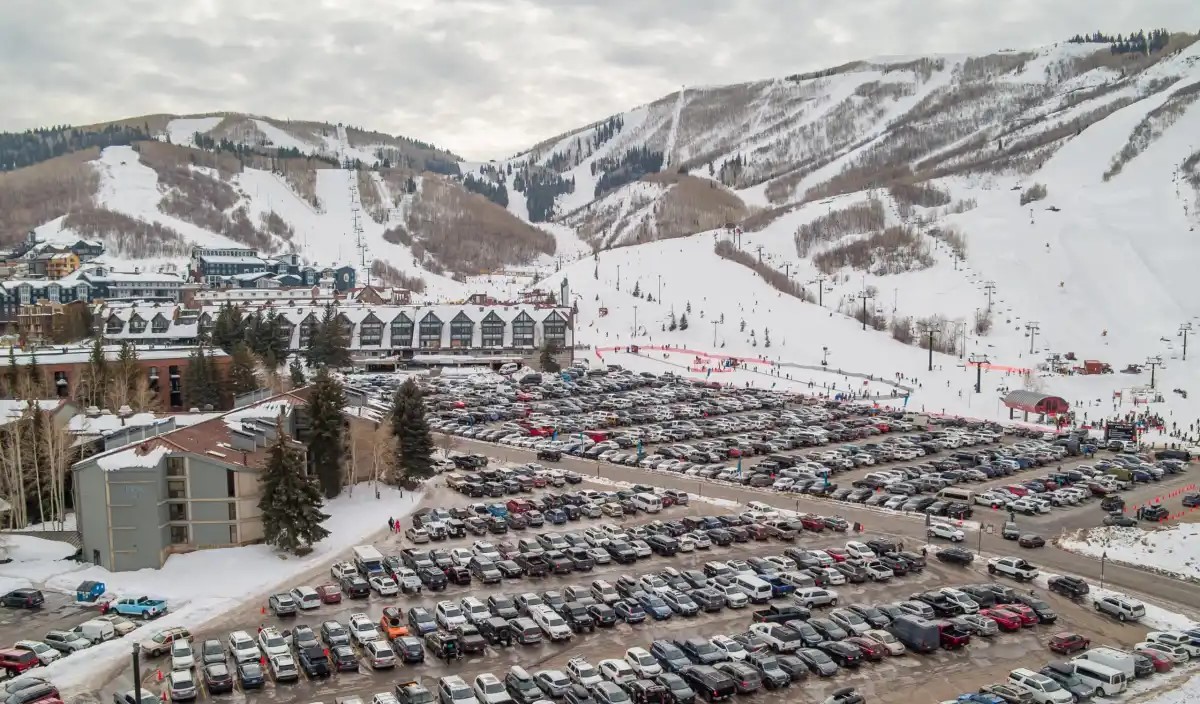
Ski resorts seem to introduce new fees with every trip these days. Beyond lift tickets and rentals, guests are now paying extra for things like early lift access and RFID pass fees. People think paying for parking is another way Vail Resorts charges guests to make a profit. However, Vail isn’t using the revenue from guests paying for parking to pad its bottom line. Instead, it is using that money to reinvest it into finding solutions that will mitigate traffic congestion.
For years, a small two-lane road has been the main access road to Stowe Mountain Resort, Vermont. The town itself is small, and there is no real highway to access the resort. Vail initiated the paid parking program to incentivize people to carpool in hopes of reducing the number of cars on the road. Vail reinvests the money from its paid parking program into purchasing more buses and public transportation. This doesn’t just help Stowe’s guests get to the mountain but also helps people in town who aren’t even going to the mountain to ski. “We didn’t earn any of that money. Every penny that goes into our paid parking at Stowe goes immediately back into infrastructure for parking and public transportation,” Difiore said.
The Epic Pass
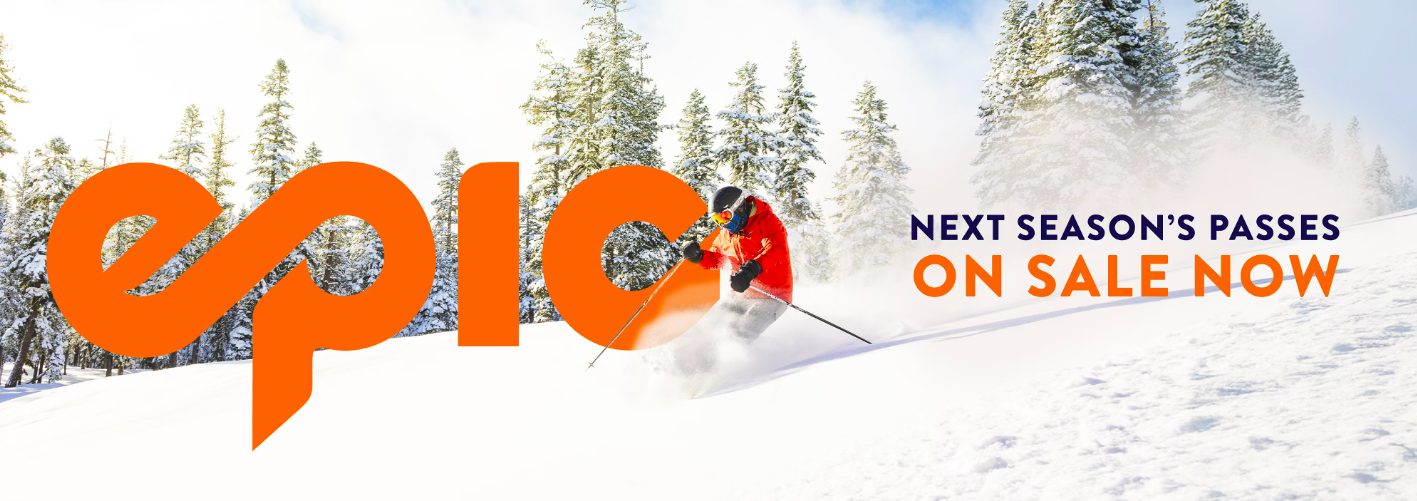
Much has been said and written about the EPIC pass’s effect on the ski industry. Some critics suggest that it has changed and ruined the industry. It may have changed the industry but ruined it; it all depends on how you look at it. The EPIC pass has brought stability to mountains that may have been struggling and could have gone out of business. An example of this is that Vermont used to have more than 150 ski areas at one time. By the late 90s, there were only about 20 left in Vermont, many years before Vail Resorts acquired mountains in the Northeast. “It dropped from over 150 to 20 because people wanted more, and the sport was evolving,” Difiore said. The smaller ski hills couldn’t survive because they couldn’t afford to make the necessary upgrades at their mountains, and some people wanted more. That’s where a company like Vail Resorts can make a difference and provide the necessary financial backing to ensure these resorts don’t disappear.
“We’re proud of the stability we’ve brought to mountains that have struggled in the past, ensuring long-term stability for the ski community. Our business model, advance commitment plus geographic diversity, has driven unprecedented investments in the employee and guest experience, made the sport more accessible to more people, and created stability for our resorts, employees, and communities in the face of climate change,” Difiore said.
According to Difiore, the creation of the Epic Pass revolutionized the ski industry. Ski resorts no longer had to depend on daily skier passes and unpredictable snowfall. The Epic Pass ensured preseason revenue through the purchase of early season pass sales. This gave Vail Resorts and other multi-resort companies a predictable income, allowing continual investments in its teams, communities, resort infrastructure, snowmaking, and guests’ experience, regardless of the weather or visitation levels. The era of the mega-ski pass with dynamic pricing and multi-resort access had begun.
Park City Ski Patrol Strike
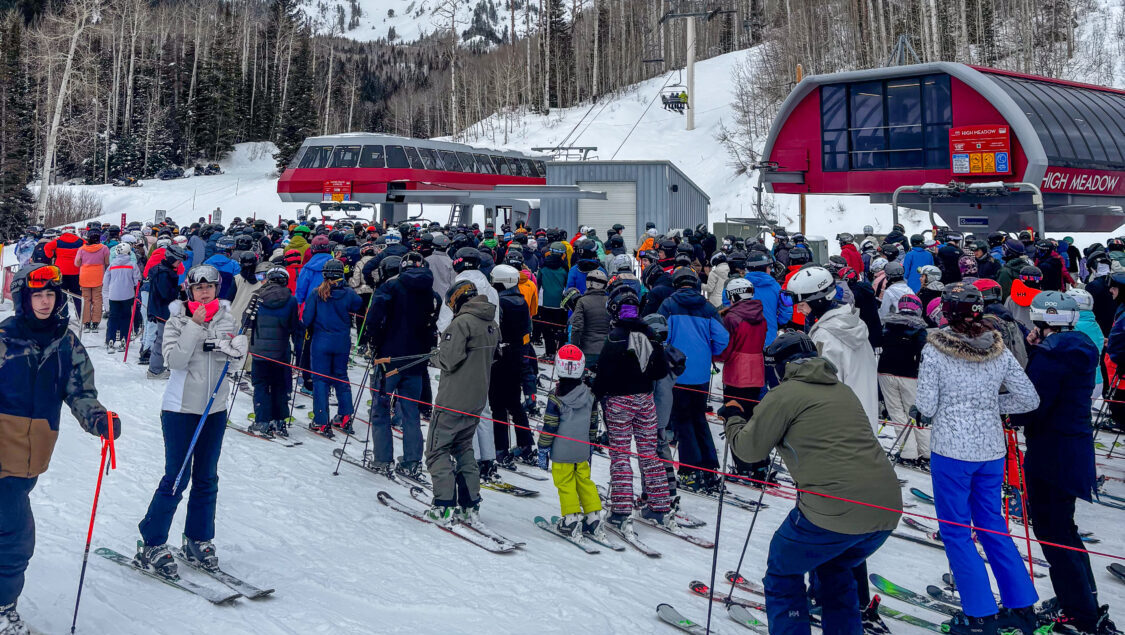
The long lines at Park City, Utah, left guests and Vail Resorts with many headaches. The new contract, which will stay in effect through 2027, gives entry-level ski patrollers and mountain safety employees a starting salary of $23 an hour, according to the Park City Professional Ski Patrol Association, which represents 200 employees at the country’s largest ski resort. 200 Park City Mountain patrollers received an average wage increase of $4 an hour, with veterans getting a $7.75 hourly bump.
No one wants a strike, especially during the middle of the ski season and the holidays. It makes life difficult for guests, employees, and management. Difiore explained that, at the end of the day, Vail does care about its employees and their well-being.
“We care about employees and our fellow coworkers in that relationship, and we’re committed to doing the right thing for our employees regardless of the union. At the end of the day, we just want to do what’s right and what’s best for our employees. I think that’s kind of the key message and underlying thing: We’re here to do the right thing, and we’re here to support our employees because we all work together,” Difiore said.
Investors Calling For Resignations

Any company that stays in business long enough will face complaints, issues, and problems to solve. Vail Resorts doesn’t have to be told that. It has had its share of issues and problems over the years, and this year may be its toughest. In January, Late Apex Partners, a shareholder of Vail Resorts, wrote a letter to the Vail Resorts board of directors calling for major overhauls at Vail and for several top executives to be fired, including CEO Kirsten Lynch. Taylor G. Schmidt of Late Apex Partners, LLC signed the letter, which was sent to Vail headquarters on Jan. 27. The letter proposed a path forward that the firm says could increase Vail’s per share to $400. According to the letter, the path includes hiring a proven CEO, reducing dividends, changing the board, and growing an Epic partnership network as opposed to capital-intensive mergers and acquisitions.
According to Difiore, the letter was the first time anyone from Vail Resorts knew of any grievance. Vail Resorts frequently engages with its many stakeholders and values their feedback to make the best decisions moving forward and make adjustments as needed. Vail’s course of action was to read and understand the letter, make the best decisions moving forward, and make adjustments as needed. The letter did come as a surprise to Difiore and Vail Resorts, she admitted. “That was the first time we were also hearing it, and the thing is, we do engage frequently with our many different stakeholders, and that’s because we value the feedback,” Difiore said. “We want to try to be the best we can be for everyone, so understanding that, obviously, you can’t satisfy everyone, but it starts with listening and really taking a look at yourself. So that’s what we try to do with every piece of feedback,” Difiore said.
Vail Resorts has long been a dominant force in the ski industry, shaping the future of skiing through innovation, technology, sustainability, and community-focused initiatives. While challenges have arisen in recent years, Vail Resorts proactively addresses concerns and invests in a stronger future for skiers and their communities. The company has taken decisive steps to improve its guest experiences, sustainability, and employee well-being, positioning itself as a leader in the modern ski industry. While no company is without challenges, its commitment to listening, adapting, and improving is setting a new standard for the future of mountain tourism.
For more information, visit Vail Resorts’ website.
Pretty disgusting amount of propaganda there. Since when is sNow Brains a PR arm of Vail? I have yet to meet anyone that thinks Vail has improved the industry for the public. Then again, the monopolistic extorting cash out of public land use without public benefit is a popular corporate MO in the US and Canada. Call your legislators and ask them to force public land management to review these resort leases that provide little to no benefit to the general public.